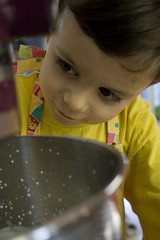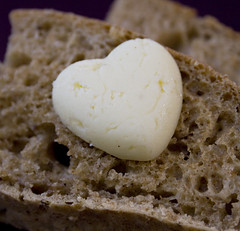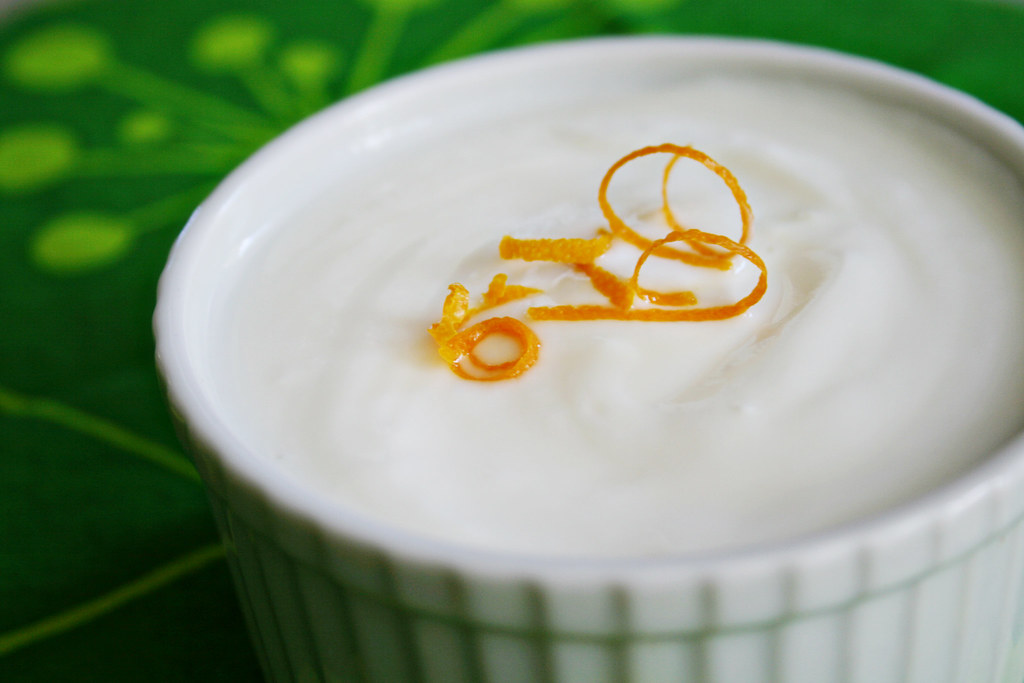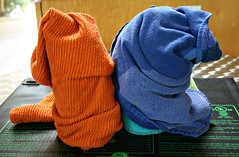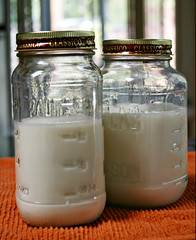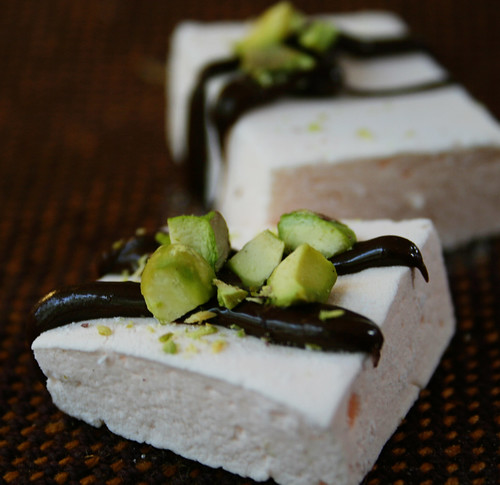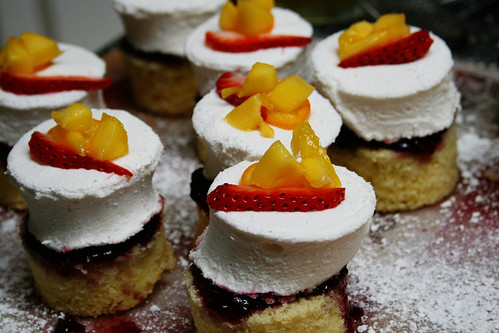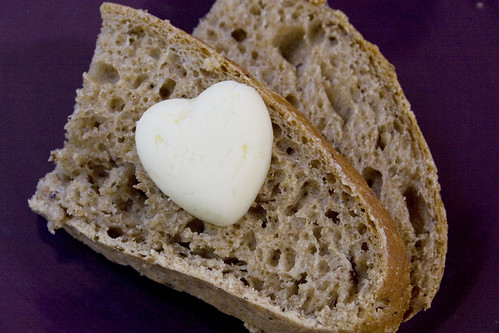
You've probably made butter before, perhaps in elementary school or at camp: Put some heavy cream in a jar and shake, shake, shake. And then you never made it again.
Time to revisit butter. This time, use the stand mixer. Whip up some butter, customize it with your favorite flavors, and stash the flavored, or compound, butter in the freezer. Slice off a bit to instantly perk up steamed vegetables, pastries fish, steak, great bread ... Minimal effort with elegant, great-tasting results. It's addictive. You can cheat and make compound butter by mixing your extras into store-bought butter, but how cool is it to present your own butter when having friends over for brunch?
My 6-year-old was cool to the idea of making butter -- been there, done that -- so my 3-year-old helped with this batch. We taste-tested the cream as it transformed into butter, and he helped mix in our extras. We made about 7 ounces of butter and split it into two logs: one with honey, cinnamon, and vanilla, and the other with garlic and basil. The 6-year-old was no more excited about the butter when his brother and I served up toasted homemade wheat bread with honey butter for an after-school snack... until he tasted it. "More! More!" Success.
Last summer I added lemon verbena to the garden, and my summer obsession was a log of butter with verbena and lemon zest. I just got my hands on a full pound of wonderfully fragrant vanilla beans, and I suspect my next obsession may be butter with vanilla bean and rum. Or cardamom. Or both. Spooned into a steamy hot fresh popover. Mmmm.
Butter, Straight Up and Flavored
This is a small batch, yielding a little less than 7 ounces of butter, but you can double the recipe. A bit of salt greatly enriches the flavor -- I prefer unsalted butter generally, but homemade tastes better with a pinch. You can also make butter by shaking the cream in a jar, but I found that to be enjoyable exactly once. Your kids may feel otherwise.
1 pint heavy cream
pinch of sea salt
pinch of sea salt
Pour cream into mixer bowl. Add a pinch of salt, or more to taste. Begin whipping the cream, at high speed. Stop occasionally to scrape the bowl and taste how the cream is changing, because it's fun.
Once you have whipped cream, you're almost there: Keep going. The airy cream will collapse and condense, growing crumbly-looking and slightly yellow. When you see a bit of liquid separating in your bowl, you're there.
Pack the butter into a ball. Knead it and wash in cold water to rinse away the so-called buttermilk. (This is not the buttermilk you cook with!) Keep washing until the water runs clear. Your butter is ready!
If you're flavoring your butter, mix in your goodies now. (See variations below.)
Spoon the butter into a strip along the a sheet of parchment and then roll it up, much like rolling sushi. A sushi mat would work wonderfully with this, but I make my rolls nice and tight by folding it over and pressing the opposite edge tight with a dough scraper. Twist the ends to close, and store for a week or so in the refrigerator or a few months in the freezer. Just slice off coins when you need them. Alternatively, you can pack the butter into ramekins, small dishes, or candy molds.
For flavored butter:
Options include herbs (I use fresh herbs, but make sure they're dried well), garlic, pepper, vanilla bean, flavor extracts, honey, spices, citrus zest, rum, blue cheese, caramelized onion, sun-dried tomato, chipotle chile, vinegar, and much more. Add to softened butter, mix it in, and wrap and store your butter. If you have a favorite mix-in to share, I'd love to hear it. I'm turning into a butter junkie.
Once you have whipped cream, you're almost there: Keep going. The airy cream will collapse and condense, growing crumbly-looking and slightly yellow. When you see a bit of liquid separating in your bowl, you're there.
Pack the butter into a ball. Knead it and wash in cold water to rinse away the so-called buttermilk. (This is not the buttermilk you cook with!) Keep washing until the water runs clear. Your butter is ready!
If you're flavoring your butter, mix in your goodies now. (See variations below.)
Spoon the butter into a strip along the a sheet of parchment and then roll it up, much like rolling sushi. A sushi mat would work wonderfully with this, but I make my rolls nice and tight by folding it over and pressing the opposite edge tight with a dough scraper. Twist the ends to close, and store for a week or so in the refrigerator or a few months in the freezer. Just slice off coins when you need them. Alternatively, you can pack the butter into ramekins, small dishes, or candy molds.
For flavored butter:
Options include herbs (I use fresh herbs, but make sure they're dried well), garlic, pepper, vanilla bean, flavor extracts, honey, spices, citrus zest, rum, blue cheese, caramelized onion, sun-dried tomato, chipotle chile, vinegar, and much more. Add to softened butter, mix it in, and wrap and store your butter. If you have a favorite mix-in to share, I'd love to hear it. I'm turning into a butter junkie.

